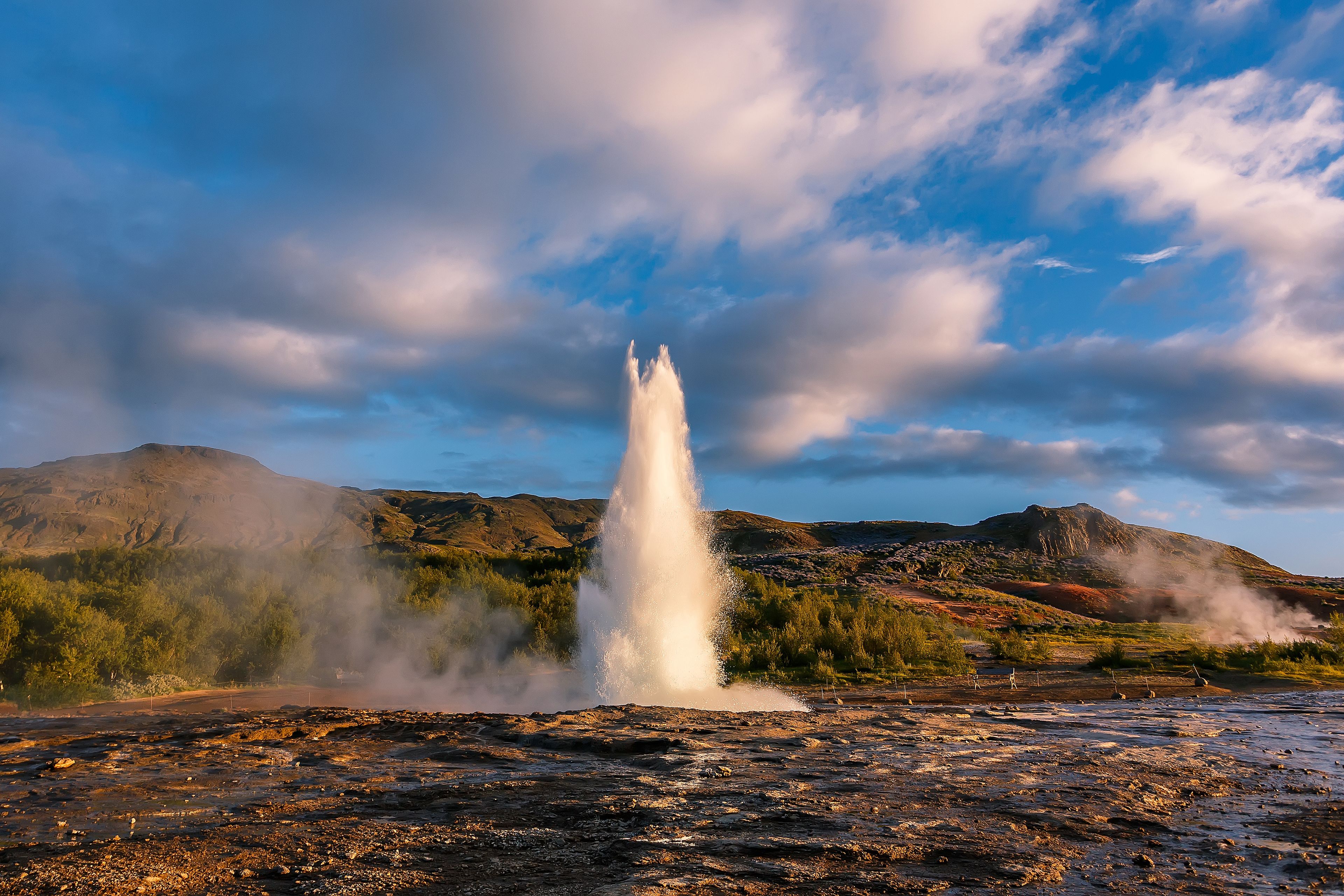
Explore with Ease: Iceland Public Transportation Guide
Jump to chapter
Iceland is a country known for its stunning landscapes, unique culture, and friendly people. It's no wonder that it has become a popular tourist destination in recent years. However, with its remote location and rugged terrain, getting around Iceland can be a challenge. That's where public transportation comes in.
In this guide, we'll explore the various options for public transportation in Iceland and provide tips for making the most of your travels.
Why Choose Public Transportation in Iceland?
We'll always encourage you to rent a car, as we truly think it's the best way to explore the country. However, we don't want you to miss out if you don't drive (or don't want to). Public transport in Iceland has some pros that shouldn't be overlooked.
Cost-Effective
One of the main reasons to choose public transportation in Iceland is its cost-effectiveness. Iceland is known for being an expensive country, and renting a car can add up quickly. By utilizing public transportation, you can save money and still see all the sights.
Eco-Friendly
Iceland is a country that prides itself on its commitment to sustainability and protecting the environment. By choosing public transportation, you can reduce your carbon footprint and contribute to the country's efforts towards sustainability.
Convenient
While Iceland may seem like a small country, it's actually quite vast and spread out. Public transportation offers a convenient way to get around, especially if you're not comfortable driving on the country's winding roads.
Types of Public Transportation in Iceland
Buses
Buses are the most common form of public transportation in Iceland. They are operated by Strætó, the country's main bus company, and offer routes to most major cities and towns. The buses are modern, comfortable, and equipped with free Wi-Fi, making them a popular choice for tourists.
You have routes connecting Reykjavik and Akureyri, the two most important cities in the country. You can also go from Akureyri to Húsavík for whale watching. You can see all the routes in the table below, but for further information on prices and times, check the Strætó website.
Straeto Destination Table
| Region | Route | Route number | From | To |
| South Iceland | Leið 51 | 51 | Selfoss / Vík / Höfn | Reykjavík |
| Leið 52 | 52 | Reykjavík | Landeyjahöfn | |
| Leið 71 | 71 | Þorlákshöfn | Hveragerði | |
| Leið 72 | 72 | Selfoss | Flúðir | |
| Leið 73 | 73 | Selfoss | Grímsnes | |
| Southern Peninsula (Suðurnes) | Leið 55 | KEF – Airport | Reykjavík | |
| Leið 87 | Vogar | Miðstöð - Reykjanesbær | ||
| Leið 89 | Reykjanesbær | Sandgerði | ||
| West- and North Iceland | Leið 57 | Akureyri | Reykjavík | |
| Leið 58 | Stykkishólmur | Borgarnes | ||
| Leið 59 | Borgarnes | Hólmavík | ||
| Leið 63 | Varmalandsskóli | Borgarnes | ||
| Leið 64 | Kleppjárnsreykir | Borgarnes | ||
| Leið 65 | Borgarnes | Búðardalur | ||
| Leið 81 | Borgarnes | Reykholt | ||
| Leið 82 | Hellissandur | Stykkishólmur | ||
| Leið 84 | Skagaströnd | Blönduós | ||
| Westfjords | Leið 61 | Ísafjörður | Hólmavík | |
| Leið 62 | Patreksfjörður | Ísafjörður | ||
| North - and Northeast Iceland | Leið 56 | Egilsstaðir | Akureyri | |
| Leið 78 | Siglufjörður | Akureyri | ||
| Leið 79 | Húsavík | Akureyri | ||
| Eastfjords | Leið 91 | Egilsstaðir | Norðfjörður | |
| Leið 92 | Breiðdalsvík | Fáskrúðsfjörður | ||
| Leið 93 | Seyðisfjörður | Egilsstaðir | ||
| Leið 94 | Djúpivogur | Höfn | ||
| Leið 95 | Borgarfjörður | Egilsstaðir | ||
| Leið 96 | Norðfjörður | Fáskrúðsfjörður |
Ferries
Ferries are a unique form of public transportation in Iceland, as they are primarily used for transportation between the mainland and the country's many islands. They offer a scenic and enjoyable way to travel, but they can be weather-dependent and may not run during certain times of the year.

Taxis
Taxis are also available in Iceland, but they can be quite expensive. They are a good option for short trips or if you're in a hurry, but they are not a practical choice for long-distance travel.
The starting fare is about 730 ISK (around $5.20), and you’ll pay roughly 351 ISK (about $2.50) for every kilometer you travel. If the driver needs to wait for you, it adds up fast—around 7,920 ISK (about $56.40)

Domestic Flights
For longer distances, domestic flights are a popular option in Iceland. They are operated by Icelandair and offer routes to most major cities and towns. However, they can be expensive, and the schedules may not always align with your travel plans.
Tips for Using Public Transportation in Iceland
Plan Ahead
When using public transportation in Iceland, it's important to plan ahead. Buses and ferries may not run as frequently as you're used to, and domestic flights can be expensive if not booked in advance. Be sure to research schedules and book tickets ahead of time to avoid any surprises.
Purchase a Reykjavik City Card
If you're planning on spending time in Reykjavik, consider purchasing a Reykjavik City Card. This card offers free access to public transportation, as well as discounts on various attractions and activities in the city.
Consider a Car Rental for Remote Areas

While public transportation is a great option for getting around Iceland's major cities and towns, it may not be as convenient for exploring more remote areas. In this case, consider renting a car for a day or two to fully experience the country's stunning landscapes.
Be Prepared for Weather Delays
Iceland's weather can be unpredictable, and this can sometimes lead to delays or cancellations in public transportation. Be sure to check the weather forecast and plan accordingly, especially if you have a tight schedule.
Exploring Iceland with Public Transportation
Reykjavik

Reykjavik, Iceland's capital city, is a must-visit for any traveler. With its colorful buildings, lively culture, and stunning views, it's no wonder it's become a popular tourist destination. Public transportation in Reykjavik is easy to navigate, with buses running frequently and a compact city center that is easily walkable.
The Golden Circle
The Golden Circle is a popular tourist route that includes some of Iceland's most famous attractions, including the Geysir geothermal area, Gullfoss waterfall, and Thingvellir National Park. While many tourists choose to rent a car for this route, it is also possible to visit these sights using public transportation. Buses run from Reykjavik to each of these locations, and organized tours are also available.

The South Coast
The South Coast of Iceland is known for its stunning landscapes, including black sand beaches, waterfalls, and glaciers. While it may be more challenging to explore this area using public transportation, it is possible. Buses run from Reykjavik to towns along the South Coast, and there are also organized tours available.
In Conclusion
While renting a car may seem like the most convenient option for exploring Iceland, public transportation offers a cost-effective, eco-friendly, and convenient alternative. By planning ahead and utilizing the various forms of public transportation available, you can fully experience all that Iceland has to offer. So hop on a bus, ferry, or plane and start exploring this beautiful country!
Latest Blog Posts
 Rental Cars
Rental Cars15 Hidden Gems in Iceland You Can't Miss
Sure, everyone knows about the Blue Lagoon, Skógafoss, and the glitzy cafes of Reykjavik, but here’s the thing: Iceland’s best treasures aren’t always the ones all over Instagram because the real magic lies in the tucked-away spots that most tourists don’t think of. Think hidden waterfalls, epic canyons, and places where you don’t need to elbow people out of the way for a decent photo! These 15 gems take you off the beaten path and show you a more untouched side of Iceland, where every turn feels like your own little discovery.
 Highlands
HighlandsTungnaá, a beautiful river in the heart of Iceland
Iceland is known primarily for its natural beauty. The astonishing landscapes that can be found in this diverse Nordic country are almost endless, and some of them are well-known all over the world. But if you’re looking to explore a part of Iceland that’s a little less crowded and a lot wilder, then let us tell you about Tungnaá. This river in Iceland’s central Highlands is not your typical postcard scene. It carves its way through black volcanic sands and between mountains that seem to be taken out of a fantasy novel. Tungnaá is the kind of place that feels untouched, a secret spot where nature can be witnessed in all its glory. However, its remote location and tricky access require careful planning. For this reason, let us walk you through all you need to know about this place for a smooth visit.
 Volcanoes
VolcanoesA look into Iceland’s volcanic landscapes: Saxhóll Crater
Iceland is known globally for its extraordinary natural landscapes. They have been shaped by different forces, such as geothermal energy, glaciers, or the relentless power of the Atlantic Ocean. But the most spectacular of them all is, perhaps, volcanic activity. There are hundreds of examples scattered all over the island. Among all the many geological marvels that can be found in the country, Saxhóll Crater, in West Iceland, is a fascinating example. It’s not as well known as other iconic sites, but this crater gives visitors the chance to explore the nation’s volcanic heritage and enjoy panoramic views of a diverse and striking region.